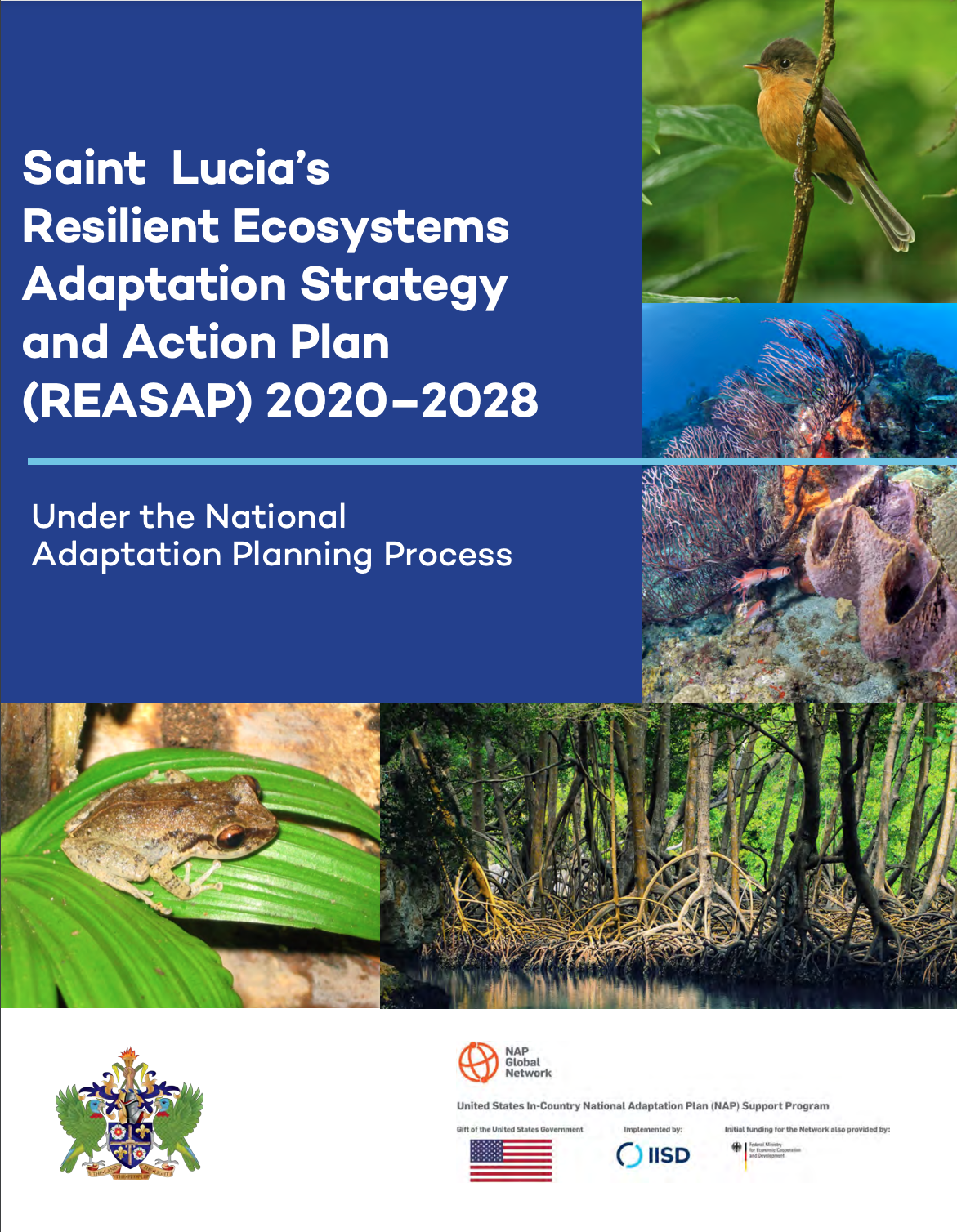Priorities, Strategies and Reports
Financing is a significant constraint for small island developing states (SIDS) and specifically for the Caribbean region, especially to finance mitigation given the limited fiscal space many Caribbean SIDS are facing. Four of the main means by which Saint Lucia’s climate change funding needs are outlined through:
-
Saint Lucia’s Nationally Determined Contributions (NDCs), which will be updated on a 5-year cycle in accordance with the rules under the United Nations Framework Convention on Climate Change (UNFCCC) and its Paris Agreement;
-
Saint Lucia’s Country Programme to the Green Climate Fund (GCF), which is a living document and should be updated on a rolling basis;
-
Saint Lucia’s National Adaptation Plan (NAP); and
-
Saint Lucia’s Adaptation Communication.
Based on the NDCs of 2016, which had a significant mitigation focus, Saint Lucia outlined a need for financial aid that was estimated at USD $183 million (at 2015 prices) to fulfil its mitigation target by 2025 and government programme costs are estimated to be USD $19 million. Costs were also estimated at USD $218 million through to 2030, to fulfil its mitigation potential with government programme costs estimated at USD $23 million.
Saint Lucia is in the process of elaborating its NDC into projects and interventions for achieving its targets, with assistance from the NDC Partnership. Portions of these financial requirements are expected to be fulfilled through accessing GCF resources and it is therefore very important to ensure the National Designated Authority (NDA) has the institutional capacity required to play its role in overseeing, managing and implementing GCF funded projects.
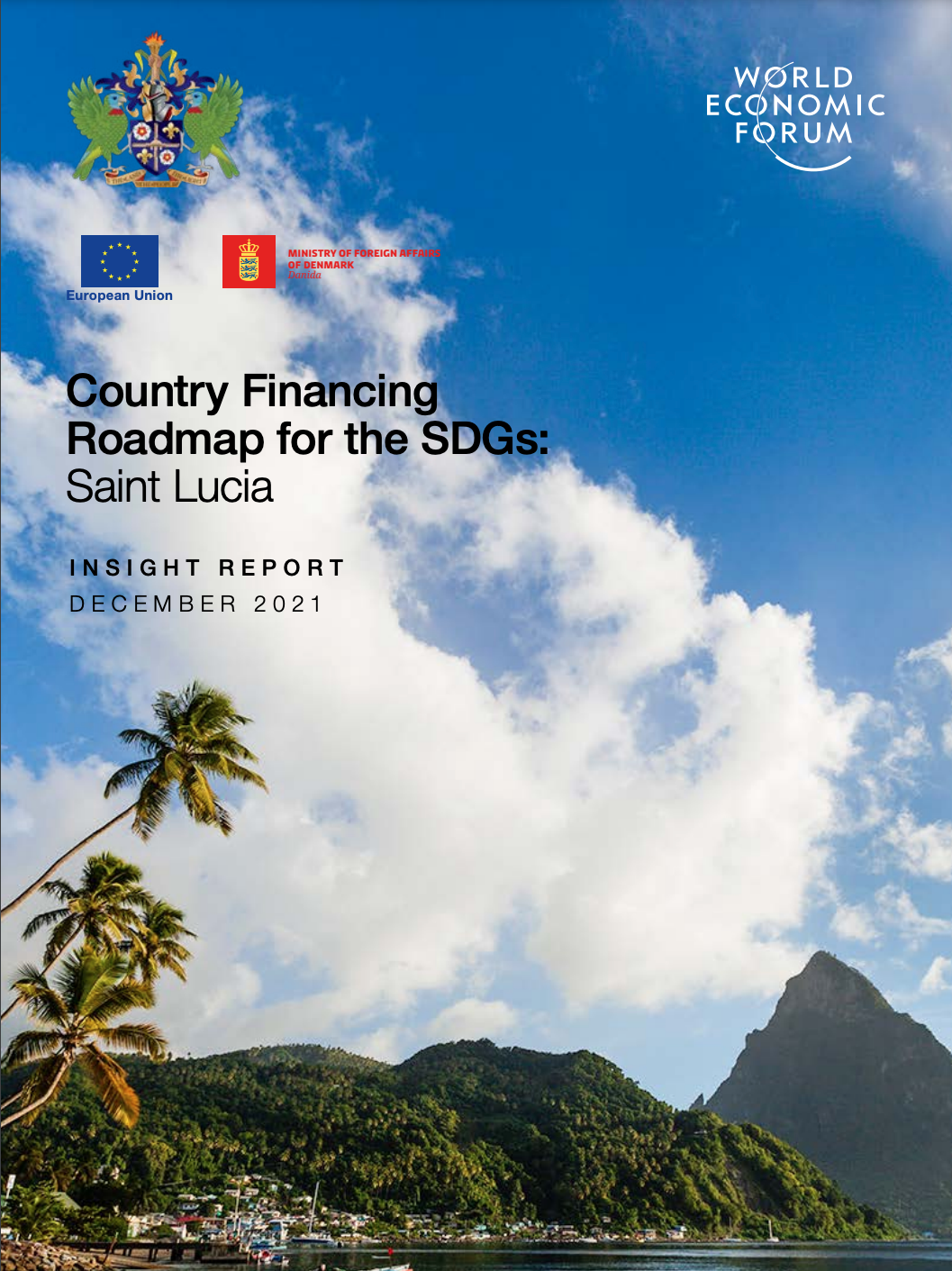 Saint Lucia’s Country Financing Roadmap
Saint Lucia’s Country Financing Roadmap
The Country Financing Roadmap (CFR) aims to identify and develop strategies to bridge the financing gap for immediate and longer-term national development priorities in line with the SDGs through joint action plans to attract greater investment.
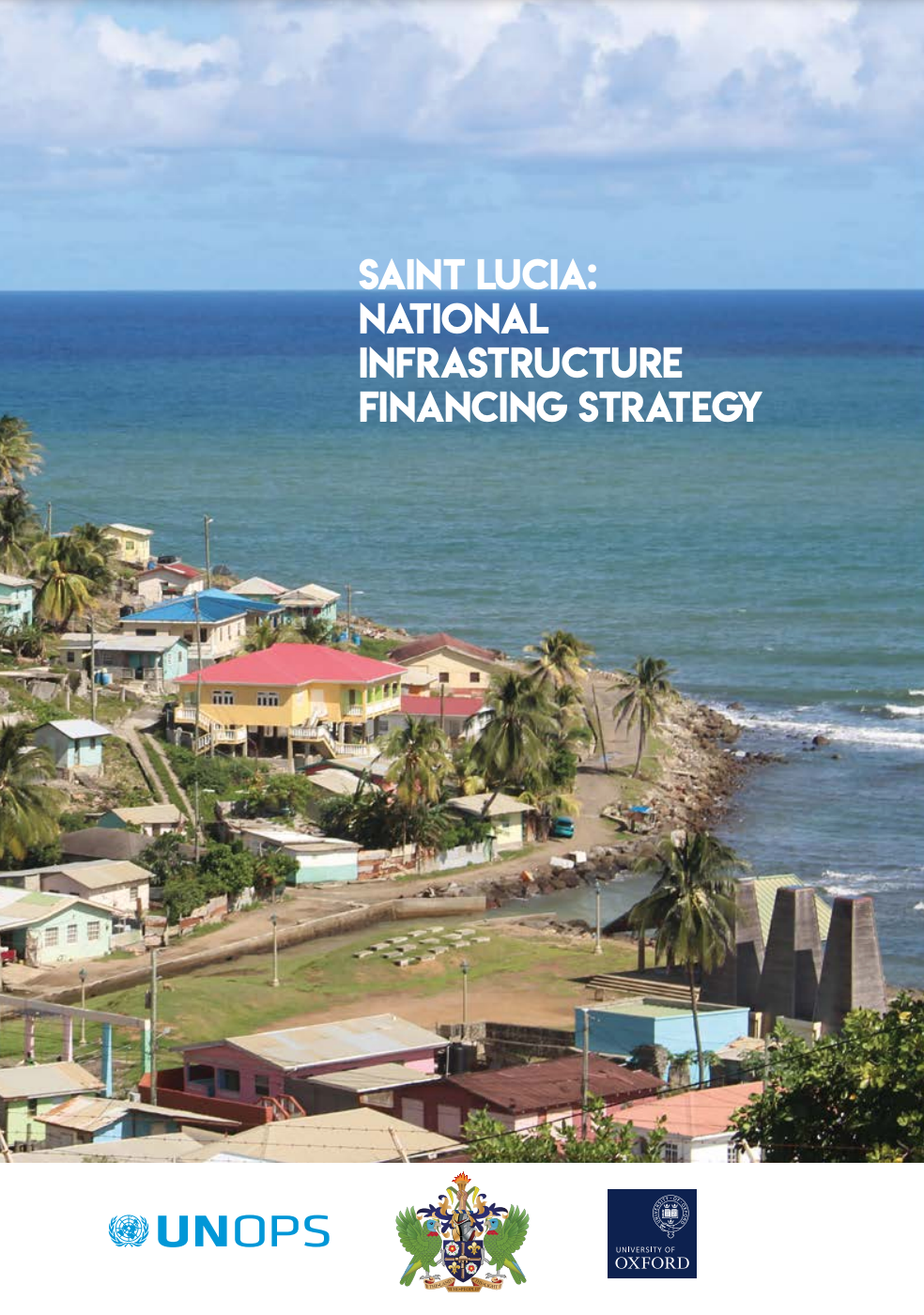 Saint Lucia’s National Infrastructure Financing Strategy
Saint Lucia’s National Infrastructure Financing Strategy
This report outlines institutional arrangements, maps historical financing trends, explores the financing landscape, and evaluates project financing readiness to identify potential financiers and develop a strategic infrastructure financing plan.
.png) Saint Lucia’s NAP Climate Financing Strategy
Saint Lucia’s NAP Climate Financing Strategy
This document outlines strategies to access finance and ensure that the resources available to Saint Lucia for the achievement of its NAP objectives are appropriate and national needs.
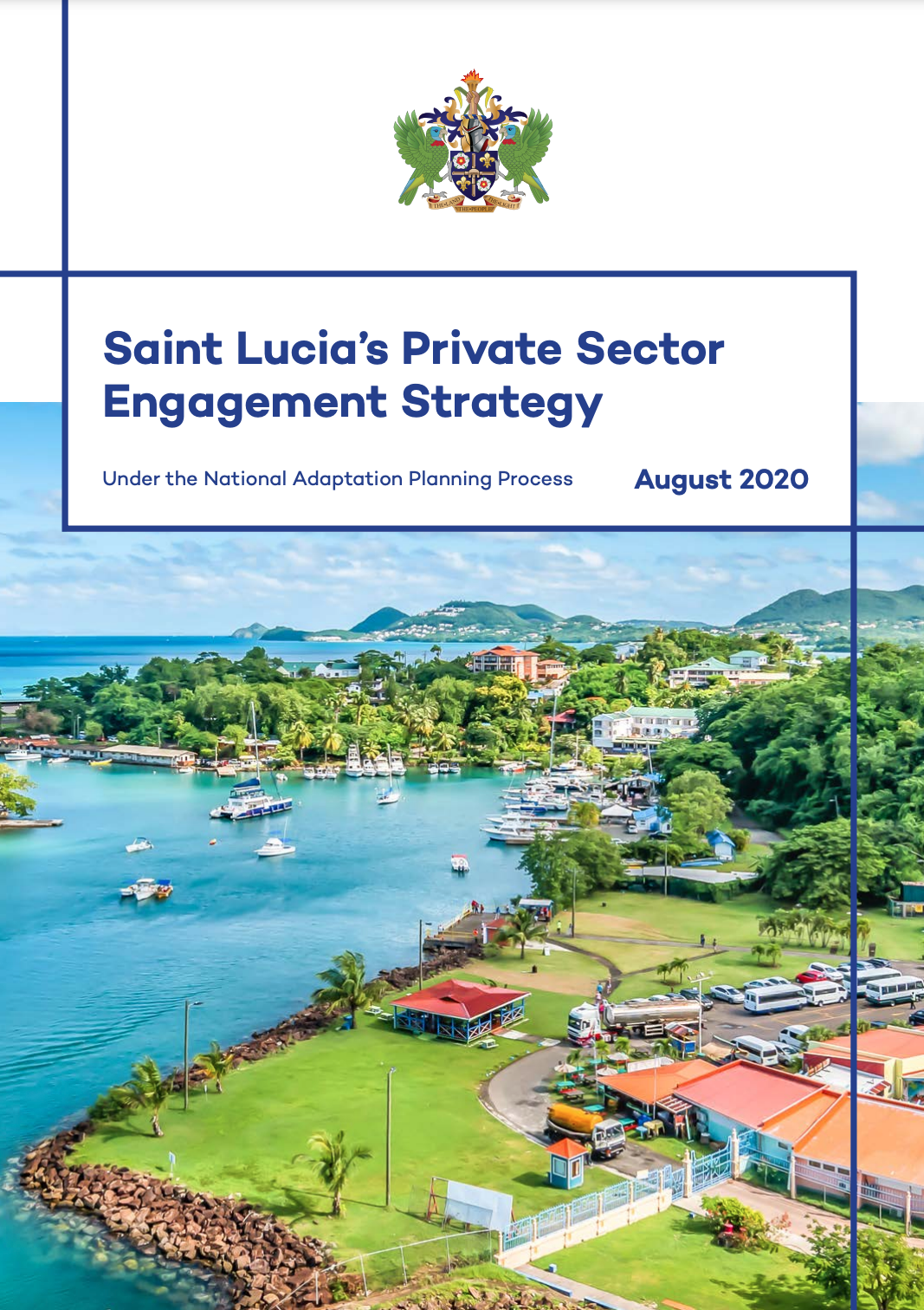 Saint Lucia’s NAP Private Sector Engagement Strategy
Saint Lucia’s NAP Private Sector Engagement Strategy
This strategy intends to stimulate a more informed and devoted private sector to contribute actively to meeting national adaptation priorities.
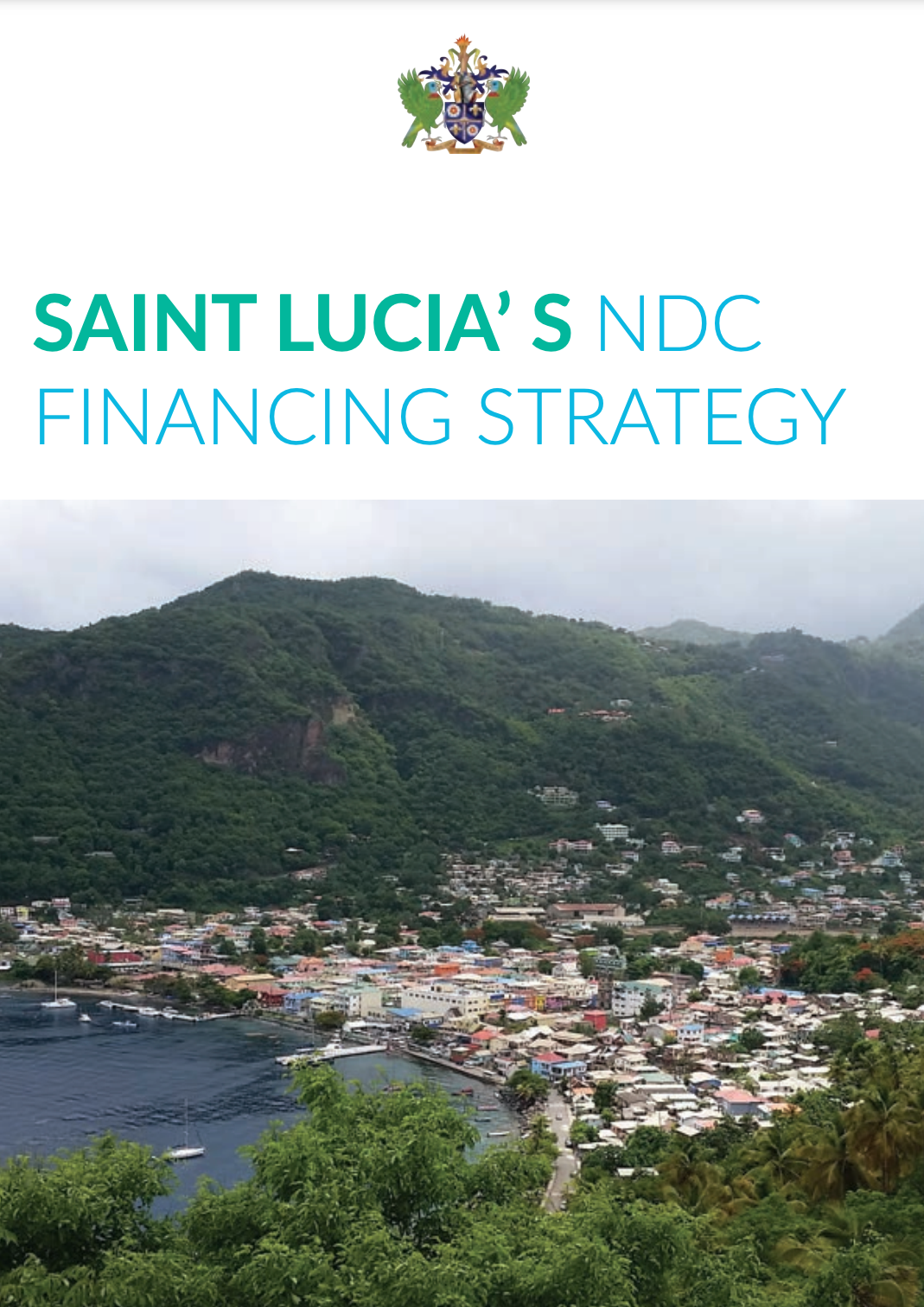 Saint Lucia’s NDC Financing Strategy
Saint Lucia’s NDC Financing Strategy
This strategy outlines potential approaches and next steps for exploring innovative financing mechanisms such as national financing vehicles, debt-for-climate swaps, green bonds, and public-private partnerships in order to catalyze investment from domestic, international, and private sector sources to meet the country’s NDC goals.
Adaptation - NAP
Saint Lucia’s NAP process is spearheaded by the Sustainable Development and Environment Division (SDED) of the Department of Sustainable Development, currently housed within the Ministry of Education, Innovation, Gender Relations and Sustainable Development. The NAP process has benefitted from the inputs of multiple stakeholders, comprising public, statutory, academic and private sector bodies. Saint Lucia’s overarching NAP continues to be supplemented by the following documents.
Saint Lucia’s Sectoral Adaptation Strategy and Action Plan for the Water Sector (Water SASAP) was designed on a ten-year framework for action to reduce water-related risks induced by climate change and climate variability in Saint Lucia and to build capacities of relevant actors for ensuring the sustainable management of water resources and services under current and future climatic conditions.
 Saint Lucia’s Agriculture SASAP
Saint Lucia’s Agriculture SASAP
The Sectoral Adaptation Strategy and Action Plan for Agriculture (Agriculture SASAP) outlines 45 adaptation measures deemed critical for building climate-resilient agriculture systems in the country, and provides an in-depth contextual analysis and search for potential effective solutions to the country’s agriculture-related challenges with climate change, supported by a multi-stakeholder consultative process which started in 2017.
Saint Lucia’s Resilient Ecosystems Adaptation Strategy and Action Plan (REASAP) consists of 58 adaptation measures deemed critical for strengthening the resilience of natural systems and accelerating the implementation of ecosystem-based adaptation approaches to build climate resilience across Saint Lucia’s society.
Mitigation
The Government of Saint Lucia has already taken concrete steps towards defining mitigation actions to address national vulnerabilities. Saint Lucia's NDC sets a conditional target of a GHG emission reduction of 16 per cent by 2025 compared to its business as usual (BAU) scenario and a reduction of 23 per cent by 2030. The Third National Communication (TNC), published in September 2017, includes an updated GHG inventory as well as an assessment of mitigation options in the six UNFCCC mitigation sectors, namely energy demand, electricity generation, agriculture, industrial processes, land-use, land-use change and forestry (LULUCF) and waste.
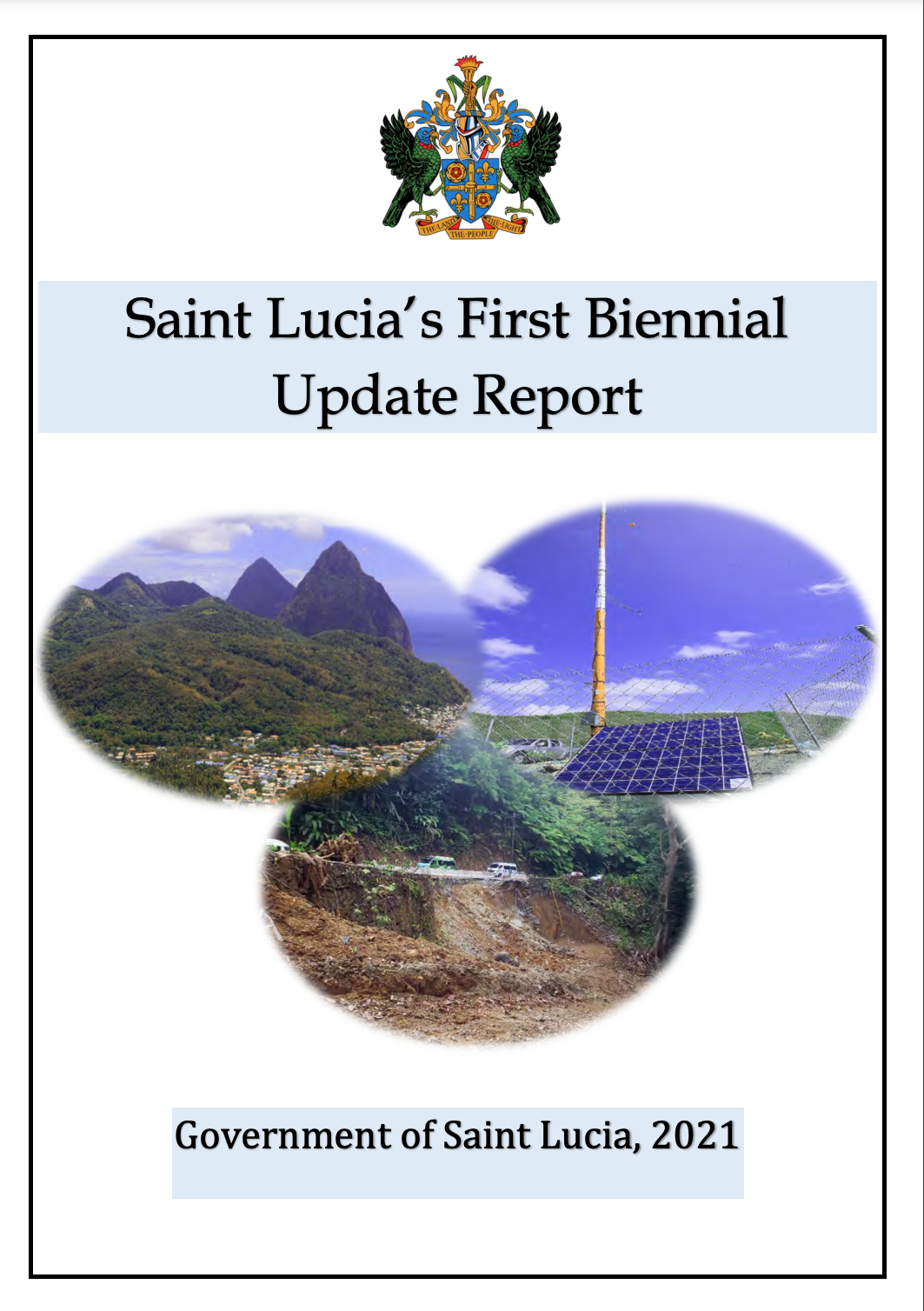 Saint Lucia’s Biennial Update Report
Saint Lucia’s Biennial Update Report
This first Biennial Update Report has been prepared to meet Saint Lucia’s obligations as a party to the UNFCCC. It contains the following chapters:
Chapter 1: National Circumstances
Chapter 2: Institutional Arrangements for Domestic Measurement, Reporting and Verification (MRV)
Chapter 3: National Greenhouse Gas Inventory
Chapter 4: Mitigation Actions and Their Effects
Chapter 5: Finance, Technology and Capacity Building Needs and Support Received
Chapter 6: Other Relevant Information
Nationally Appropriate Mitigation Actions
First introduced at the 13th Conference of Parties to the UNFCCC (COP13) in Bali in 2007, National Appropriate Mitigation Actions (NAMAs) are voluntary, non-binding policy instruments that provide a framework for pursuing a country’s socioeconomic and development goals, while contributing towards global greenhouse gas mitigation efforts. Through support from the Japan-Caribbean Climate Change Partnership (J-CCCP) the Government of Saint Lucia was able to advance the process of its Green Schools NAMA.
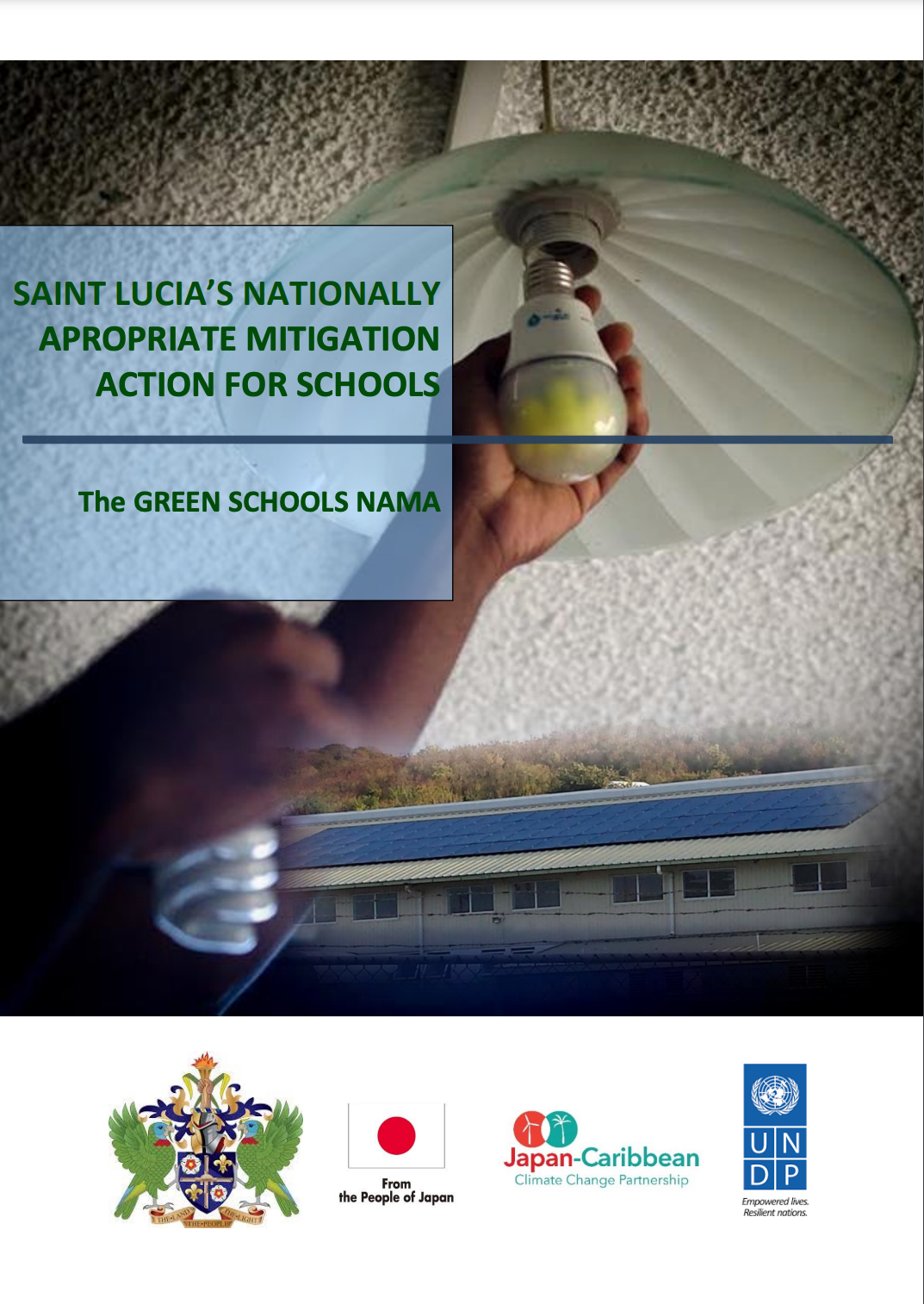 Saint Lucia’s Green Schools NAMA
Saint Lucia’s Green Schools NAMA
The NAMA covers primary and secondary schools across the entire island of Saint Lucia. The NAMA covers all GHG emission-related activities in school buildings (such as lighting, air conditioning or cooking) as well as renewable energy generation on school sites.


